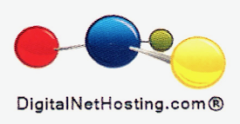The Secret Recipe For Profitability – Erp Software
Enterprise resource planning, or ERP software solutions and ERP vendors have been around for over forty years. The landscape of enterprise applications has steadily improved throughout the last 4 decades particularly in the mid 1990’s when the YTK, year 2000 scare was starting to take hold.
At this time ERP vendors gained the spotlight as companies started scrambling to ward off potential data and information meltdowns as the new millennium with its triple zeroes wreaked havoc on databases and records ill equipped to handle the numerical roll over. Times were extremely good for enterprise systems and the industry in general. ERP software sales, ERP consulting and implementation projects reached an all time high during this five year period.
Fortunately, the database sky did not fall when the new year rolled over to 2000 and businesses pretty much continued the dotcom bubble ride through the first quarter of the new millennium. The dotcom bubble burst in the second half of 2000 along with the YTK panic subsiding caused the ERP software industry, and most all tech industries for that matter, to take a breather. Over the next 5 years, ERP systems and ERP software lost its sizzle as technology hype began to focus on mobile applications and social network technologies.
However, since 1995, an ERP 2.0 has been emerging that can be compared with the introduction of Model T Fords to the automotive industry. The automobile revolution started not with the invention of the automobile which were a luxury item made available to only the mega wealthy but rather with the introduction of an automobile that could be enjoyed by the masses, the Model T Ford.
The same analogy can be applied to ERP software solutions and ERP modules. Historically, ERP vendors developed applications for the heavy hitting Fortune 100 manufacturing corporations with a price tag to match. The benefits achieved with ERP systems gave large organizations even more of a competitive advantage over smaller companies within the same industry as information and business processes were better streamlined to maximize resources and profitability. Very few companies could afford the million dollar plus price tag just to play, and this barrier to entry remained for decades.
However, in the last decade with web based application sparked by the internet hitting the market and with the power of open source applications and communities, smaller sized businesses are now able to take advantage of ERP software and ERP application benefits with SaaS, software as a service web-based solutions that are both affordable and powerful. In a nutshell, ERP application benefits are now available to the masses and that is starting a revolution of new product innovations that fit businesses with a very customized fit regardless of size, industry and business model.
The market is heating up for ERP vendors and for small and medium sized businesses looking for enterprise solutions to better compete in the marketplace. However, this surge of new enterprise software innovations ironically come with a price. Companies have so many choices when it comes to ERP vendors and software applications that it is not a simple task to filter all the ERP software solutions on the market to find the best fitting solution for individual companies. Companies are bombarded with not only ERP software applications but with vendors specializing in ERP modules, subset applications within full ERP systems such as CRM, customer relationship management and HRMIS, human resource management information systems ERP modules, to name just a few. However, although the ERP software selection process is a longer process now, the benefits of ERP software apps are tremendous, and it’s usually better to have too many ERP vendors and ERP apps to choose from rather than too few.
Source by Sudhani

